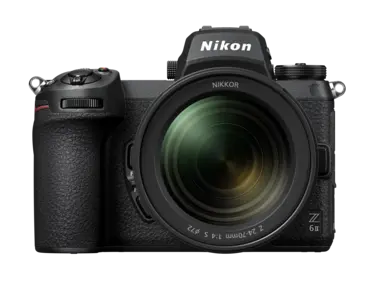What sound capture devices do I need for professional videography?

All you need to know to capture better sound
Poor audio quality will also make a video seem low quality, even if you use the latest lenses and camera body. So how do you capture good audio for your next professional videography venture? Read on.
Essential equipment for videography audio recording
Any good filmmaking venture will include certain pieces of audio equipment, such as:
- Microphones
- Sound recorders
- Accessories such as stands and boom arms
We’ll review each equipment category in the following sections, starting with the most obvious: the mic.

Microphones for recording videography audio
Good audio is essential for professional videos, even professional-looking amateur ones. That doesn’t mean you need to go out and spend thousands on a condenser mic immediately, but you should get the nicest equipment you can for your budget. You may be surprised at the quality of results possible without dropping a ton of cash.
Popular microphone types used for video recording are:
- Lavalier
- Shotgun
- Studio mic, e.g. condenser mics
- Headset mic
- Your internal camera microphone
You’ll want to avoid the last two, as headsets can distract the viewer (unless you’re filming a gaming stream) and internal camera mics aren’t made to capture high-quality sound at a distance.
Lavalier
Lavalier mics (pronounced lah-vah-lee-ay) are small microphones worn on the body. They can be wired or wireless. Also called ‘lav mics’ or just ‘lavs’, they have a power supply and tiny mic that clips on to someone’s clothing somewhere near their mouth, such as the interior of their collar. When television personalities mention ‘getting mic’ed up’, they usually mean attaching a lavalier.
As with most microphone types in this article, Sennheiser, Shure and Røde are great options for a lavalier mic. Røde in particular has budget-friendly options that will still deliver decent sound.
Shotgun
Shotgun mics are long, narrow microphones that can attach to your camera via the hot shoe mount on top (where you’d usually attach a flash or flash trigger) – a great solution for gritty, guerilla-style documentary work. They can also be fastened to boom arms or stands if you want to get the mic closer to your subject.
Unlike mics that pick up 360° sound, shotgun mics are directional – they pick up audio from wherever the end of the mic is aimed. They’ll still receive some noise from other areas but get a narrower range of sound so you can focus on what you want, such as your interview subject speaking.

Studio
These mics are designed to be more stationary and are used to record productions such as interviews, podcasts, YouTube videos or livestreams. They’re larger than a lav or shotgun mic and can’t be attached to someone’s body, but they capture extremely high-quality sound.
Sound recorders and mixing boards for professional videography
You'll need a sound recorder to record the high-quality audio from a good mic. That’s because most cameras don’t have the right inputs to plug your mic into them directly. You should use multiple recorders if you’re filming a larger production with multiple people.
Each recorder uses a small memory card to record to itself, making it less likely you’ll accidentally lose that data. If you’re using wireless lav mics, sound recorders can capture a good recording even if your subject is far away from the recorder. Check out Zoom and Tascam for good options that won’t break the bank.
Invest in a mixing board if you want more control over your audio. It allows you to adjust the EQ levels of your audio during recording, cutting down on the work you have to do later in post. This isn’t strictly necessary, but worth it if you have the money.

Sound accessories for professional videography
You’ve got your mic and recorder, now it’s time to see what accessories you need. Are you setting up a podcast studio, or filming a music video? What you use will vary depending on the project. Common audio accessories include:
- Soundproofing
- Boom arms
- Mic stands
- Mic covers
- Pop shields
Soundproofing comes in several forms. There are foam panels designed to deaden sound that attach to the wall of your studio. You can also get small boxes made of that foam and designed to fit around the mic to cut out any additional noise while you’re speaking into it. Again, these aren’t required when first starting out, but they help capture a cleaner and more professional sound.
Stands and boom arms let you attach shotgun mics and position them closer to your subjects, thereby capturing better audio. Professional video productions often position a mic aimed directly at their subject’s mouth above them and out of frame. Boom arms and stands let them do that.
Mic stands that absorb shock help decrease vibrations from people accidentally bumping them or the table the mic is on. Windscreen covers, also called ‘dead cats’ because of their fuzzy appearance, are great when filming outside on location.

Dom Salmon’s set up
Building your kit
First, consider your needs. Second, consider your budget. Choose the best gear you can get for your money that meets your needs. You do not need £100,000 in equipment for professional audio work, especially if you’re a solo act. Many people start with their camera and a lav mic and work up from this.
The core pieces of kit you’ll need are a mic, a recorder and some kind of stabiliser. The rest are nice to have if your budget is tight. Start there and build out. As you get more familiar with the process of audio recording and what you need for the types of projects you take on, you can tailor a more specific set of gear to those needs.
Setting up your microphones
To record sound via a third-party microphone, connect the 3.5mm mini-jack plugs to the external microphone/line input connector on your camera. We recommend turning the mic jack plug-in power off when using microphones that do not require plug-in power to prevent noise from interference generated by a power supply. Consult your camera’s manual for more information.
More in Videography
Discover accessories
The essential guide to filters: what to use for snow, water and effects

Unlock greater creativity







